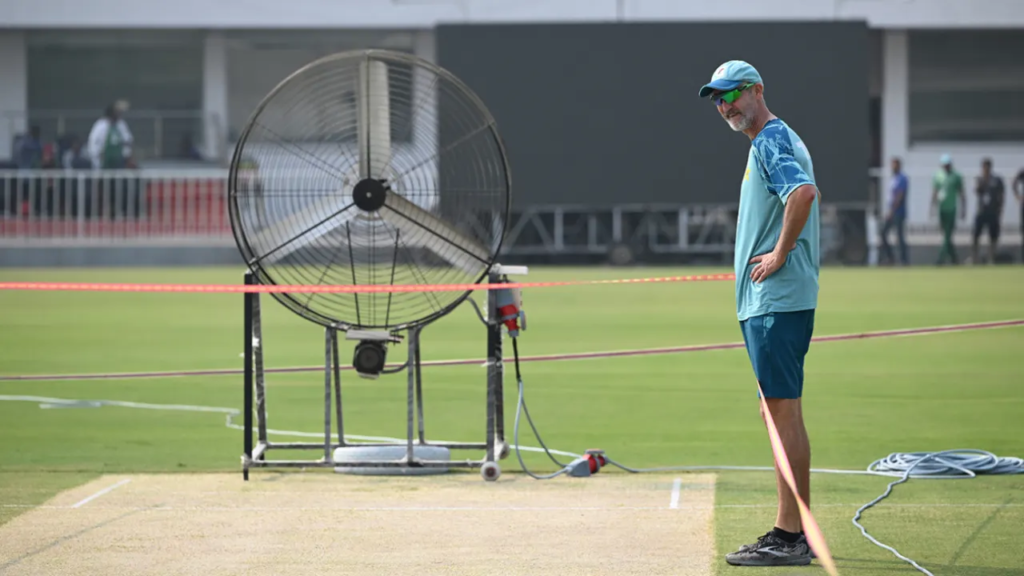
Saud Shakeel talks about change in plans with pitch preparation with respect to the opponents they will be facing.
Saud Shakeel believes that Pakistan should prepare pitches ‘according to opposition’ to be successful at home.
By now, Pakistan’s goals for the pitch are hardly a secret. Aleem Dar and Aqib Javed were already en route to Rawalpindi to supervise the pitch preparations for the last Test before the second Test reached its unavoidable end. Shan Masood expressed his desire for the surface to take turns during the Multan press conference following the game.
Two days later, enormous heaters—the kind typically used in Pakistan for outdoor winter wedding ceremonies—were placed around the strip’s boundaries, surrounded by windbreakers for optimal effectiveness. They were joined by industrial-sized fans.
The tourists have taken notice of all of this. Soon after, legspinner Rehan Ahmed was added to England’s playing XI, which only had one specialist seamer, Gus Atkinson.
There isn’t a used surface available like there was at Multan, where Pakistan chose to use the same strip from the first Test for the next match. His vice-captain, Saud Shakeel, echoed Masood’s statement that he had “never seen it take turn” in Pindi. He expressed hope that this time would be different.
“If you look at the difference between Multan and Pindi, there’s a difference of climate,” Shakeel said. “Multan is warmer than Pindi, Multan is warmer and more humid compared to Pindi. Pindi favours fast bowlers slightly and has more bounce, compared to Multan. The groundsman prepares according to that, and I think that’s what causes the changes in the pitch.
“But the way the pitch looks and the success we got in the second Test, we’ll try for a similar kind of pitch that favours us and helps us win this game.”
Pakistan has struggled to make the most of home advantage ever since returning from the United Arab Emirates. It was wise to drastically change their strategy from the UAE in the first few years and go back to seam-friendly pitches, which they thought would be simpler to prepare. It happened at the same time that a new generation of fast bowlers, led by Naseem Shah and Shaheen Afridi, emerged.
Seam-friendly pitches, however, disappeared overnight when Pakistan purposefully neutered a surface in Pindi before a Test match against Australia. Pakistan lost seven of their 11 home games during their winless streak, which was tied for the longest. Only last week, on a decaying track in Multan, was that streak snapped.
It appears, for now, to have led to a sharp volte-face in the PCB’s thinking. “We should look at pitches for series to series and match to match. And we’ve come to realise this quite late,” Shakeel said. “If you want to prepare for SENA [series in South Africa, England, New Zealand and Australia], you can do it during practice and first-class cricket. If there’s first-class cricket before South Africa, we could prepare those kinds of pitches there. But we should prepare pitches and conditions series-by-series, and according to the opposition.
“Our comeback in the second game gave us a really good morale boost. A win is always very helpful in creating a positive atmosphere. We’ll try to give spinners an advantage once more because they struggled with that in the second Test.”

